The History of E-Waste: Decades of Devices, Disposals, and Damage

In 1983, a single IBM computer cost over £3,000 and weighed close to 30 kg. Back then, people didn’t throw machines like that away. Instead, they kept them, upgraded them, and sometimes even passed them down. Fast-forward to today, and a smartwatch can cost less than dinner for two and end up in a landfill within three years.
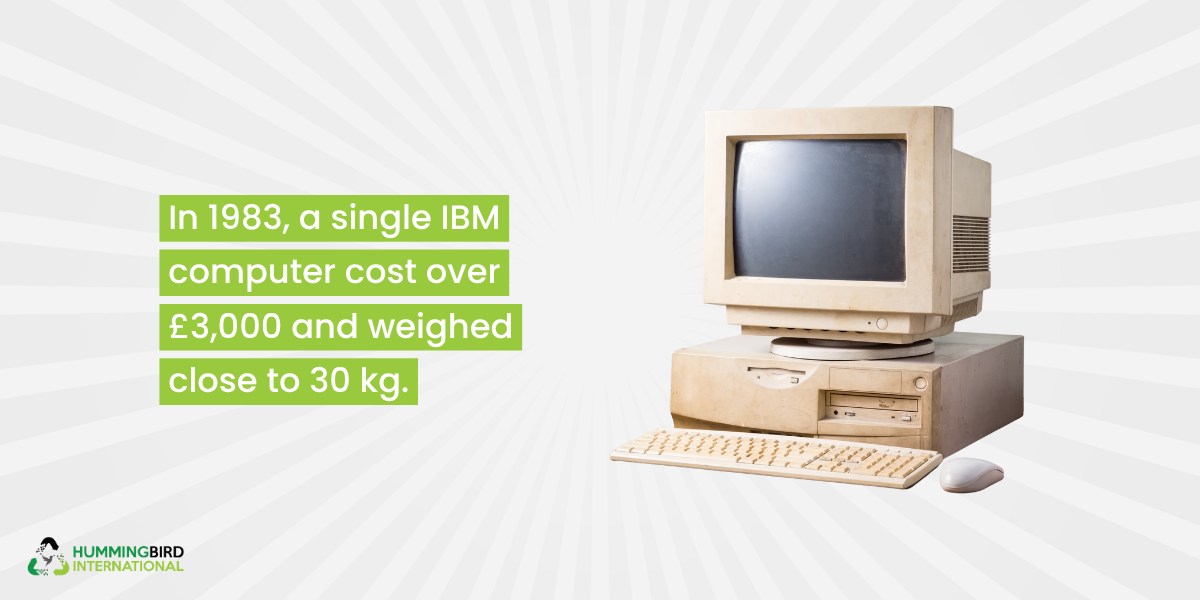
The cost of the IBM computer in 1983 was $3000, and it weighed nearly 30 kg
On the outside, e-waste is a story of more tech = more trash. But in reality, it’s the result of how our relationship with electronics and daily tech habits has changed. As devices have shrunk, so has our sense of their value, and their weight in waste has shifted from bulky monitors to complex micro-circuits that recycling plants struggle to process.
Unlike old TVs, modern gadgets are often glued shut, sealed with proprietary parts, and filled with materials that don’t play well together in a shredder. So, what exactly resulted in the shift in mindset from tech as furniture to tech as fast fashion? And how has that evolution quietly built one of the most difficult waste streams on the planet? Let’s figure out.
The Evolution of E-Waste Over the Years
Electronic waste didn’t explode overnight. It grew quietly, generation by generation, as devices got smaller, smarter, and more disposable. What started with heavy televisions and radios has morphed into an endless cycle of upgrades: laptops, smartphones, tablets, smartwatches, and beyond.
The timeline below traces the journey of e-waste from the early days of personal electronics to the hyper-connected world we live in today. For each era, you’ll see how tech trends, consumer habits, and disposal challenges evolved, shaping our current crisis.
Rewinding into history:
1950s–1960s: The Birth of Home Electronics
Popular Devices: Radios, black-and-white TVs, early refrigerators, and vacuum tubes.
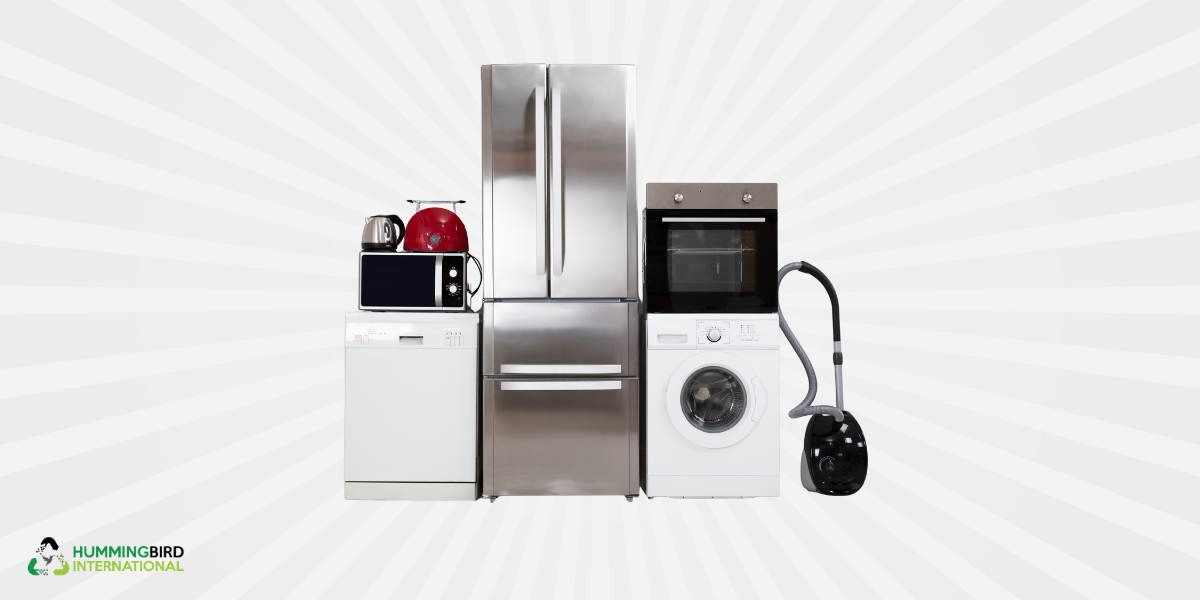
The old-school home electronic devices, like a washing machine, oven, vacuum cleaner, and more
In the post-war boom, electronics entered homes in earnest, from tabletop radios to bulky vacuum-tube TVs and sturdily built refrigerators. These devices were intended to last decades, not be discarded at the end of each season.
At this time, recycling simply wasn’t a concept; landfills were de facto endpoints. Hazardous materials like lead in CRTs and heavy metals in components were buried without regulation. It wasn’t until the Solid Waste Disposal Act of 1965 in the US that any formal waste oversight began. Yet this law covered only general refuse, not the emerging electronic category.
1970s–1980s: The CRT Boom and Start of Personal Computing
Popular Devices: Color TVs (CRTs), VHS players, and Walkmans.
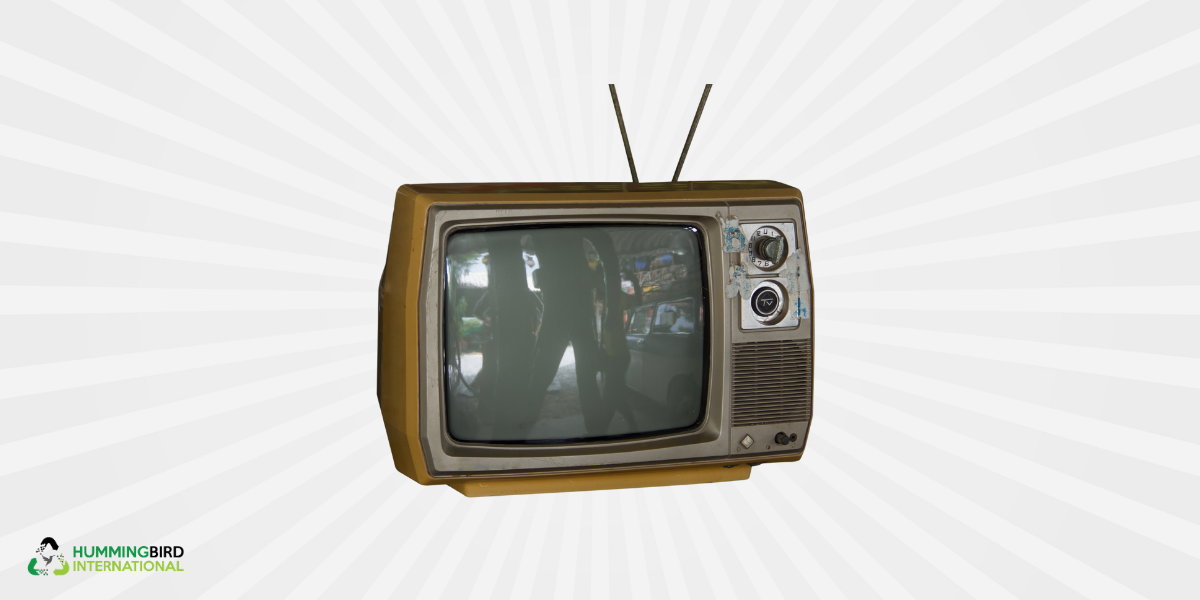
The color CRT television that was popular during the 1970s–1980s
By now, electronics had begun shrinking in size but not necessarily in waste. Color CRT televisions, Walkmans, VCRs, and the first home computers were beginning to gain popularity. These devices, often containing four pounds or more of lead per CRT, became bulky environmental hazards. Recycling CRT monitors was risky and almost impossible.
In 1976, the US passed the Resource Conservation and Recovery Act (RCRA), which was its first law to regulate hazardous waste, including electronics, at least on paper.
A dramatic warning came in 1988 with the cargo ship Khian Sea incident. The cargo ship, carrying 14,000 tons of toxic ash, was refused worldwide and dumped widely, leading directly to the creation of the Basel Convention (1989), the first international pact to limit cross-border dumping, particularly of e-waste.
1990s: Mass Adoption and Shorter Lifespans
Popular Devices: Home computers, game consoles, mobile phones, and floppy drives.
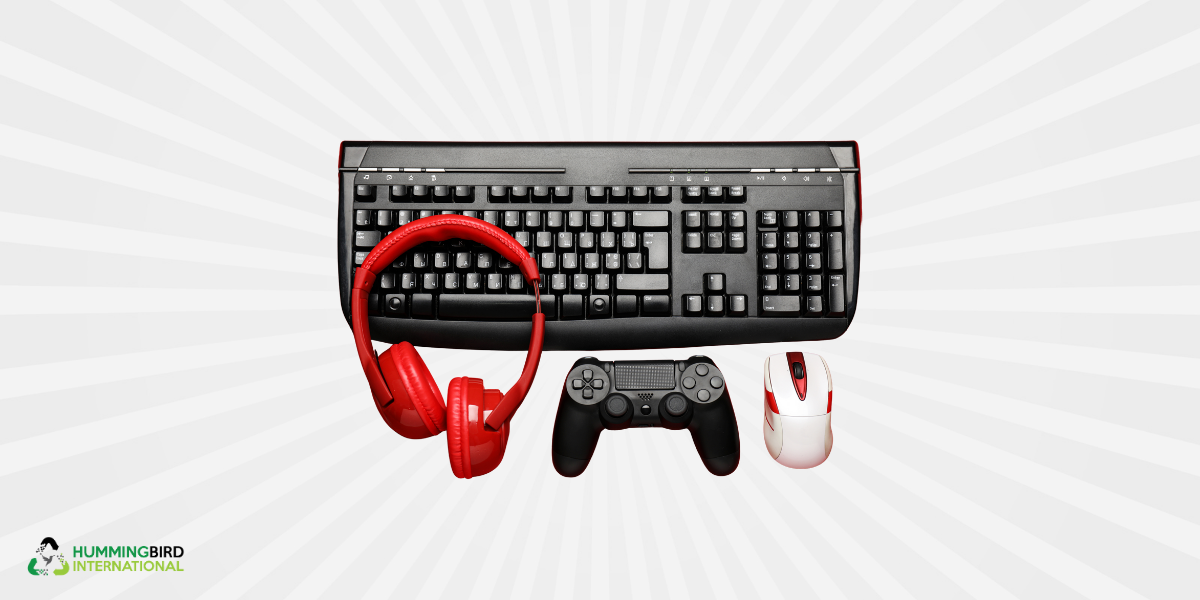
The color CRT television that was popular during the 1970s–1980s
By the 1900s, electronics ownership surged. Home PCs, early game consoles, mobile phones, and floppy disks became mainstream. But affordability also meant faster turnover. For instance, the average device lifespan was reduced to 4-6 years, and even 18-24 months in some cases.
This shift triggered early regulations by countries worldwide. Switzerland launched its first e-waste collection system in the early 1990s, gradually expanding from refrigerators to the full spectrum of electronics. Meanwhile, in 1992, the Basel Ban took effect across 175 countries (not including the US), explicitly banning hazardous waste exports to developing nations.
2000s: Mobile Revolution and E-Waste Acceleration
Popular Devices: Laptops, smartphones, digital cameras, and MP3 players.
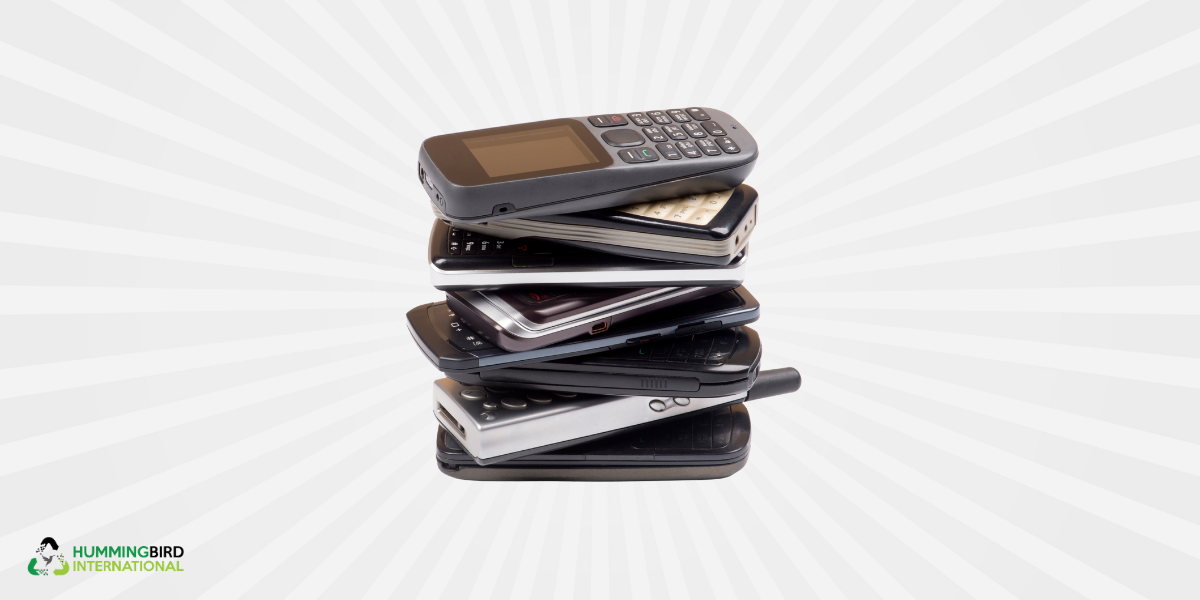
The mobile phones introduced in the 2000s, causing an increase in e-waste acceleration
The early 2000s introduced a wave of portable electronics, such as laptops, MP3 players, and smartphones. These gadgets were sleeker and more powerful yet increasingly soldered and glued with fragile components that complicated recycling. In 2003, the EU enacted the WEEE and RoHS Directives, requiring manufacturers to manage end-of-life electronics and restricting the use of hazardous substances like lead and mercury.
In the US, California passed the Electronic Waste Recycling Act of 2003, which mandated consumer recycling fees and bans on certain heavy metals in electronics. Still, vast quantities of e-waste were being legally exported. One report found that up to 20% of US e-waste ended up in Hong Kong, breaking international law and posing health hazards.
2010s: The Era of Smart Everything
Popular Devices: Tablets, wearables, smart TVs, and IoT gadgets.
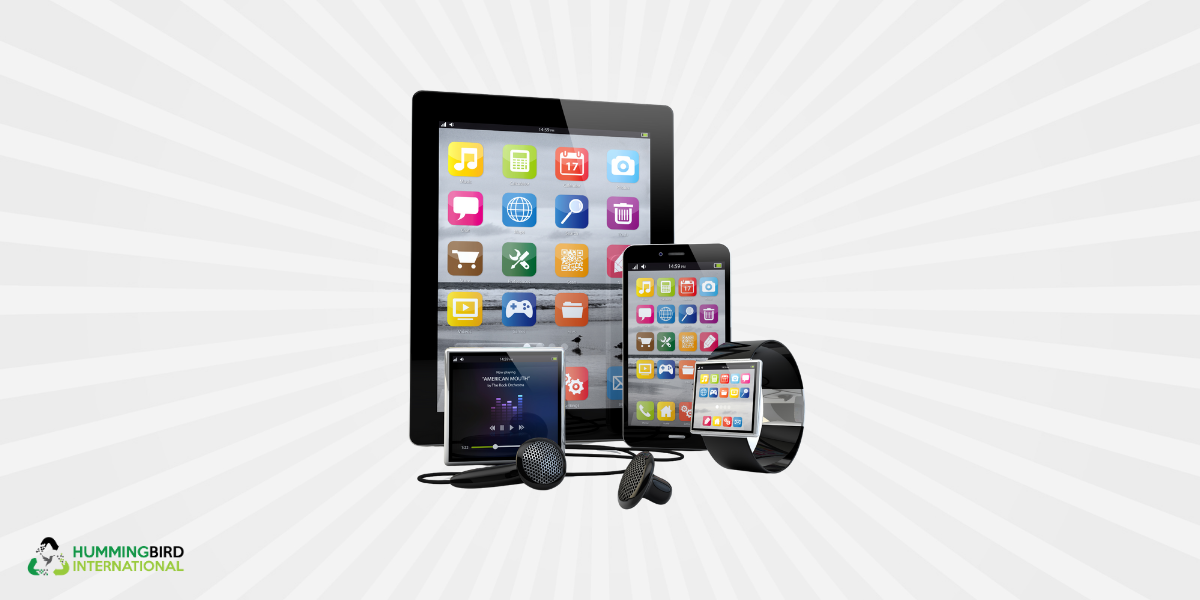
Smart devices like touch-screen phones, iPads, and smart watches became famous in the 2010s
In the 2010s, the use of smart devices, including tablets, wearables, and internet-connected gadgets, increased, many of which were designed with planned obsolescence in mind. E-waste surged to become the fastest-growing waste stream globally.
The EU responded by updating WEEE in 2012, lifting collection targets for member states to between 45% and 85% of electronic waste by the end of the decade. Around this time, the right-to-repair movement also gained traction. It challenged manufacturers on product longevity and design transparency.
2020s: The Crisis and the Pushback
Popular Devices: Smartwatches, VR headsets, and cloud-connected devices.
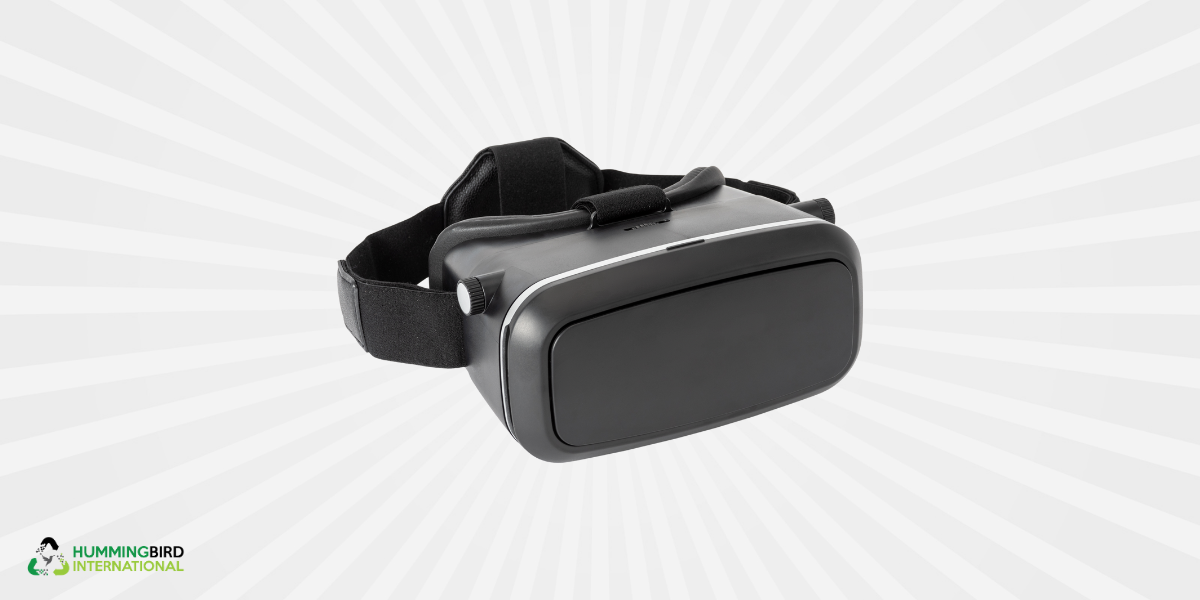
The VR gear became popular in the 2020s, making e-waste recycling tough, as they’re ultra-miniaturized and sealed.
Today’s devices including tiny earbuds, VR gear, smartwatches are ultra-miniaturized and sealed, which makes recycling tougher than ever. Moreover, global e-waste reached 62 million metric tons in 2022, up to 82% since 2010, yet only around 22% was formally recycled.
On the policy front, the EU’s new Ecodesign for Sustainable Products Regulation (ESPR), effective from 2024, enforces durability, repairability, and introduces digital product passports to track lifecycle data.
Following recent chip shortages, there’s been renewed interest in device refurbishment and sustainable IT asset disposition (ITAD) as a way to extend the life of electronics. With new hardware harder to source, businesses are increasingly turning to reuse and repair. However, global enforcement of sustainable ITAD remains inconsistent, and the infrastructure to support it is still uneven, especially outside regions like the EU. This lack of coordination hampers large-scale progress and leaves room for improper disposal and informal recycling practices like e-waste incineration.
Key Takeaways from the Timeline
E-waste is a historical problem with modern urgency.
E-waste isn’t a new problem; it dates back to the early 1950s. But back then, people didn’t throw things out so easily. Now, we upgrade every two years. The problem isn’t new, it’s just much, much faster now. And more toxic.
The more compact the device, the harder it is to recycle.
Ironically, progress makes recycling harder. Today’s earbuds, smartwatches, and sleek gadgets are marvels of engineering, but they’re full of harmful materials and designed to be tossed. The tinier the tech, the trickier it gets for recyclers to do anything with it.
Consumer habits and manufacturing practices both need to evolve.
It’s easy to point fingers at tech giants for short lifespans and locked devices. But we’re also in a cycle of “new is better.” True change means rethinking all sides, designing smarter, buying with intention, and making recycling a habit. Extending use by even a year makes a big difference.
Education, policy, and innovation must work together.
Recycling isn’t limited to bins and drop-offs. It’s policy, public awareness on what to do, and tech innovation rolled into one. Some countries have made progress while others lag far behind. Global e-waste needs global solutions and we can’t wait another decade to figure it out.
Changing the Story of E-Waste Starts with Us
Given the history of e-waste and its growing rate, it’s a prompt for action.
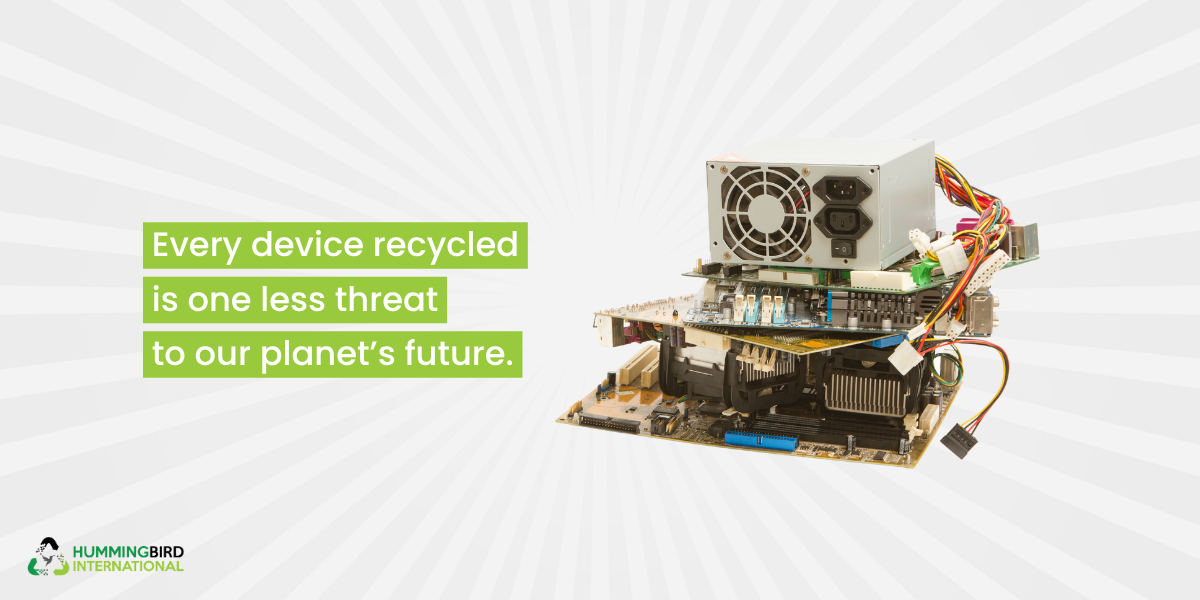
Recycling devices reduces the threat to the planet’s future
- As consumers, one of the most powerful things we can do is change how we treat our tech. That means resisting unnecessary upgrades, choosing repair over replacement, and supporting brands that prioritize sustainable manufacturing.
- Governments need to enforce right-to-repair laws, incentivize ethical e-waste handling, and clamp down on illegal dumping.
- Schools and workplaces can drive awareness through digital literacy and sustainable tech policies.
On a broader scale, e-waste solutions must go beyond recycling bins. Start the change from your end by partnering with a certified e-waste recycler like Hummingbird International. From secure data destruction to safe pickup and processing, your devices will be handled with care and kept out of landfills.
About The Author Kelly Sampson
Kelly Sampson is a writer, blogger, and environmental enthusiast. She has strong opinions about climate change, the dogs vs. cats debate, and Oxford commas. She has lent Hummingbird International her engaging and spirited voice and turned our blog into a great place to find valuable information about e-waste, e-waste recycling, and the ITAD industry. Explore our blog to read more of her work.






